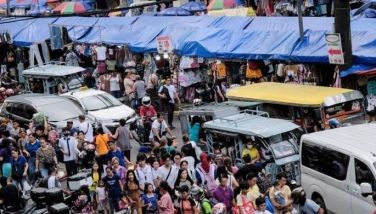9/11: The terror continues
Eleven years after 9/11, the dangers of terror continue to haunt the United States and the world. After a somber anniversary commemoration in New York, Washington, D.C. and Shanksville, Pennsylvania, a surprise violent attack occurred last Tuesday at the US Consulate in Benghazi, Libya — killing US Ambassador Christopher Stevens and three other US diplomats. For all of us, another grim reminder of the continuing threat of terrorism.
Even after the death of al Qaeda leader Osama bin Laden, underground cells continue to operate, so small they often escape the eagle eyes of Uncle Sam. Every time a leader dies, one rises up in replacement, much like the mythological hydra with nine heads that grow back every time they are severed.
Terrorism has affected the world in every aspect — emotionally, psychologically and economically — particularly the United States. An article published by the Council on Foreign Relations discusses the concept of jihad targeting the collapse of Western economies, specifically the US. And while the actual impact of terrorism on the economy is open to debate, there is no denying the heavy toll of the wars in Iraq and Afghanistan, with costs estimated to reach $1.29 trillion by the end of 2012.
The US has no choice but to continue to be vigilant, even to the point of paranoia, because each and every American is a potential terrorist target no matter which part of the world. While some nations may publicly rant against enhanced US presence in Asia Pacific, privately, they look at the US as the “equalizer” that can balance China’s growing economic and political power.
American presence in the Philippines can work to our advantage since there seems to be no light at the end of the tunnel as far as our dispute with China is concerned. Whether anti-US groups like it or not, we rely on our longtime ally to help thwart any possible occupation of disputed territories in the West Philippine Sea — which is also in America’s interest to ensure freedom of navigation and commerce in the area.
It is a fact of life that American Ambassadors need special protection, and Filipinos who sometimes grumble about the special treatment given a US diplomat should remember that securing the life of a high value target like the US Ambassador is non-negotiable. The current US Ambassador, Harry Thomas, and his convoy strictly follow traffic rules and avoid the use of “wang-wang” but nevertheless, they should still be given the right of way as often as possible. We cannot afford to have anything happen to a US diplomat — with the Philippines already acknowledged as a training ground by al-Qaeda linked terrorists like the Jemaah Islamiya. In fact, a suspected JI terrorist apprehended in Indonesia had a firearm with PNP markings — underscoring the difficulty of curbing problems like gun smuggling on account of our porous borders.
Lest we forget, what happened in 9/11 will continue to be a grim reminder that one can never be too careful. Like Iraq, Libya continues to be a dangerous place and despite the US taking every precautionary measure, the unexpected happened. Obviously it was an apparent lapse in security that cost the life of a highly respected diplomat.
The level of protection for US Ambassadors especially those assigned in nations with known Islamic extremists may soon be elevated to that accorded to a head of state. We are told that the bulletproof vehicles provided for US diplomats could soon approximate that of “The Beast” — the US Presidential Limousine fitted with 100-mm thick armor that can withstand a rocket launcher, a night vision system, pump-action shotguns, its own oxygen supply and a blood bank with the “principal’s” blood type.
In hindsight, no one can really blame Americans if they are “OP” (over protective) when it comes to security. I remember the trip of President George Bush to Manila in 2003 that cost the US taxpayer an estimated $25 million for an eight-hour visit. Close to 400 Secret Service men, intelligence officers and state department personnel were billeted in various hotels around Manila. An advance jumbo jet carrying the bulletproof vehicles for the presidential convoy arrived earlier before the two identical Boeing 747 Air Force One jets (one was a decoy) flew in. Before the arrival of Bush, air traffic was stopped for two hours, causing so much delay in domestic and international flights. At the Malacañang state dinner, Bush did a “Houdini” — arriving first in a barong then leaving in a suit fitted with a special bulletproof vest before boarding Air Force One.
No doubt 9/11 has changed America and the rest of the world. Early on after September 11, 2001 just before landing in New York’s JFK Airport, a passenger in the business class section abruptly stood up — and after just a few steps found himself immediately pounced on by a US Marshall thinking perhaps it was another terrorist act — only to find out that the middle eastern-looking man just wanted to relieve himself.
That single incident has brought about stringent US security measures that authorities impose up to this day. Those traveling specifically to Washington, D.C. or New York City airports are not allowed to stand up sometimes for as long as 45 minutes before landing, and those who need to use the washrooms are advised to do so no later than that. Additional security measures like no standing around in groups near the cockpit are also still in place today. The way we travel has indeed changed since 9/11, and it will continue to be this way for a very long time.
* * *
E-mail: [email protected]
- Latest
- Trending




























